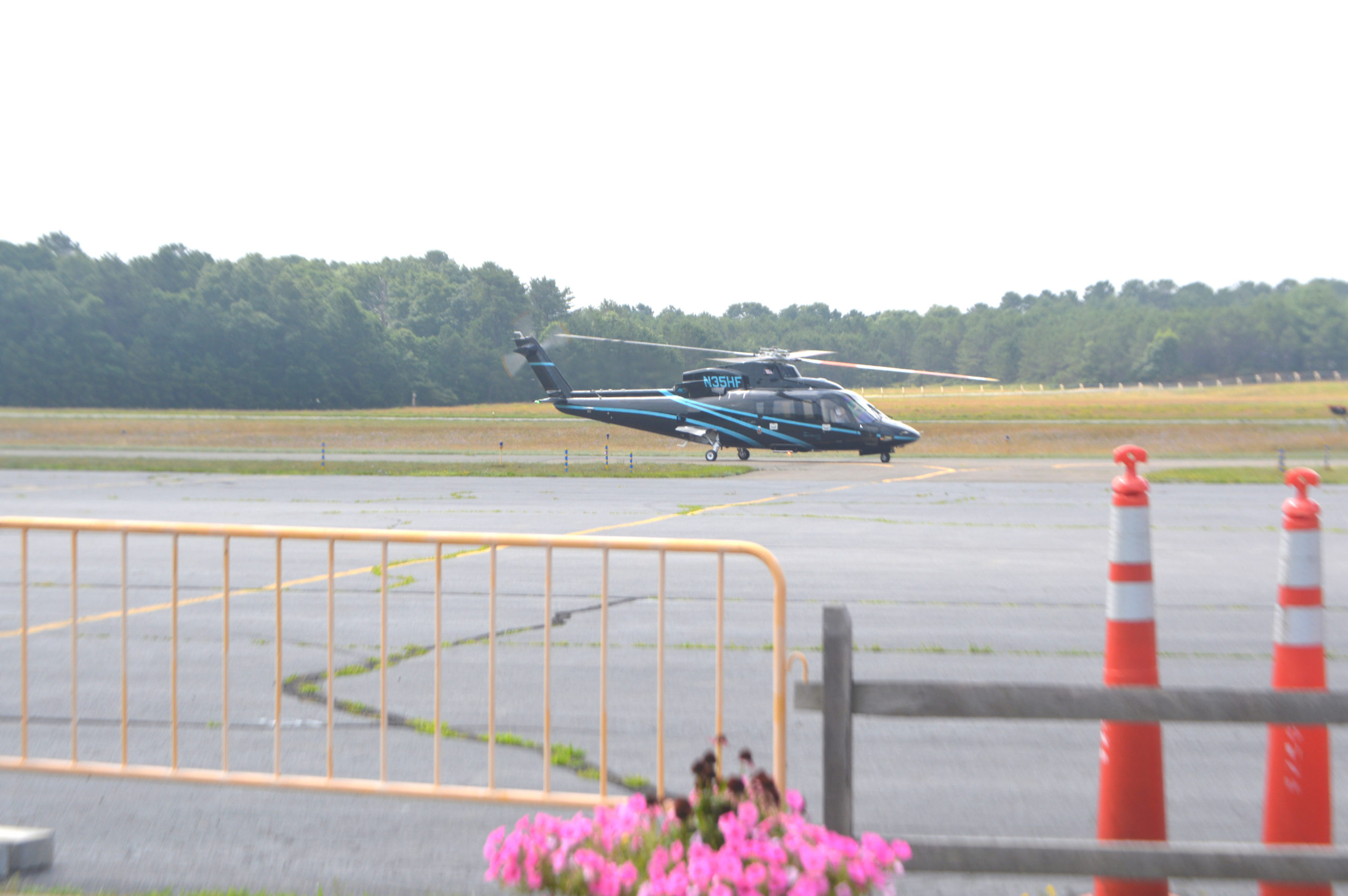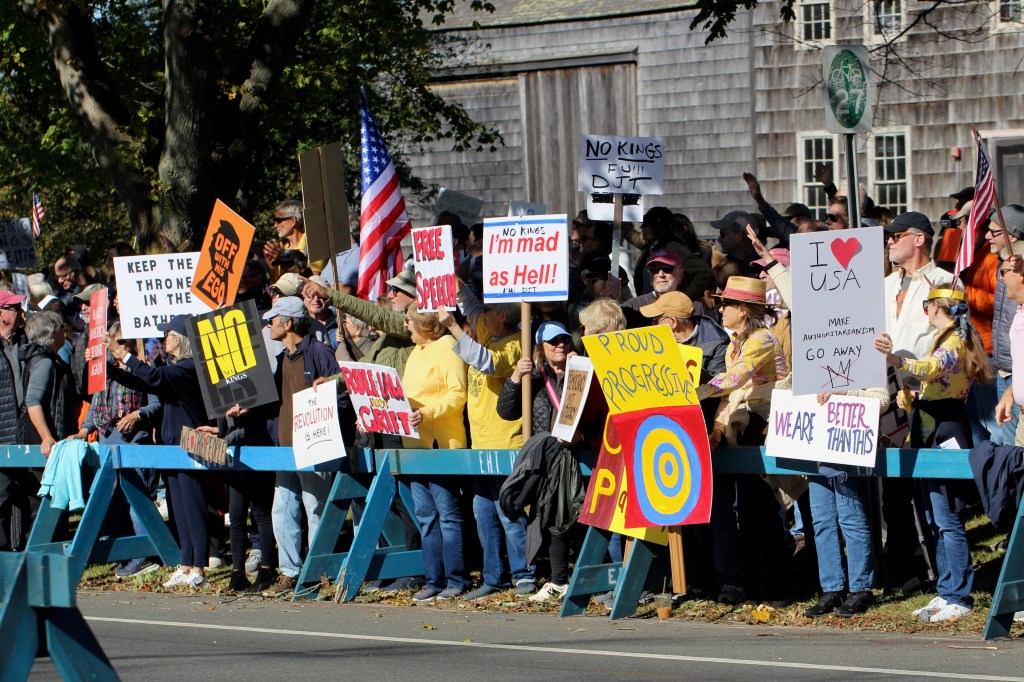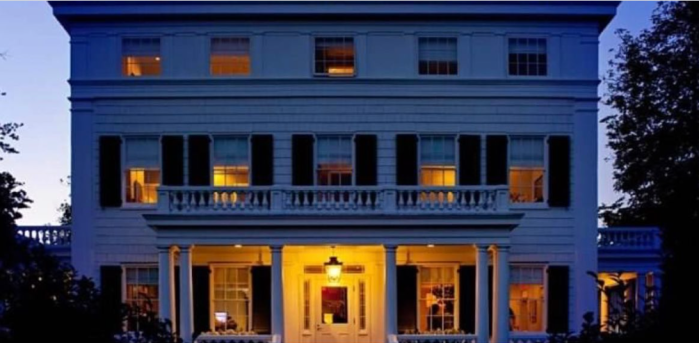East Hampton Airport Noisier Than Ever in 2019

In 2019, East Hampton Airport was busier and louder than ever. That was the upshot of a lengthy presentation made to the East Hampton Town Board on July 14 by Adam Scholten of Harris Miller Miller & Hanson, a firm that provides “the highest quality noise consulting services,” according to its website. The firm has been consulting the town on the airport for the past several years.
Scholten presented the town board with the numbers for the past five summer seasons, which HMMH defines as the Thursday preceding the 4th of July to September 30. There were about 19,100 flights in and out of East Hampton Airport in that time period last year, breaking the record of about 18,000 in 2017.
A record number of flights brought on a record number of noise complaints in 2019. The 46,730 noise complaints from residents across the East End exceeded the old record set in 2017 by about 500.
Each flight in and out of East Hampton triggers an average of 2.5 noise complaints. These complaints come from a broad range of residences. Scholten presented coverage maps showing the originating locations of the noise complaints made last year.
Most are to the west of East Hampton. The densest path of complaints runs from East Hampton Airport west across Sagaponack, Bridgehampton and Southampton, all the way to the Great Peconic Bay. Multiple noise complaints come from the North Fork, as well.
Scholten’s presentation to the board included data from the years 2015 and 2016. The numbers from those two years are important because it is the only time East Hampton Town has regulated aircraft arrivals and departures, through the town code.
In 2015, the town passed a law that imposed a year-round curfew for flights in and out of the airport between 11 p.m. and 7 a.m. That law also banned noisier aircraft from flying at night and limited the total number of trips such aircraft could make during the season.
In late 2016, the town’s regulations covering aviation were struck down in a Federal Appeals Court, a ruling that the U.S. Supreme Court let stand.
Scholten showed the town board charts that illustrated the explosion in the use of noisier aircraft at the airport once the East Hampton aviation laws were struck down. Helicopter flights more than doubled from 2016 to 2017, rising from a little over 12,000 to about 26,500. Not surprisingly, the total number of noise complaints almost doubled as well, going from roughly 23,600 to 46,200.
The reason people fly helicopters to East Hampton Airport is obvious: speed. The Independent tracked one such flight that took off from Newark Airport on July 19 at 10:02 in the morning. It landed at East Hampton Airport 45 minutes later, cutting hours off the trip had it been by car.
There are three different web sites that handle noise complaints concerning East Hampton Airport.
One is called PlaneNoise, a firm contracted by the Town of East Hampton to handle airport noise complaints since 2012. That company provides both a hotline and a website where complaints can be registered.
The other two websites were created by people tired of aircraft noise in areas away from East Hampton.
Chris McCann, a software developer, invented an app called AirNoise.io in 2017 to help his neighbors in La Jolla, California who were fighting to curtail aviation noise from nearby San Diego International Airport. The app has a single button that, when tapped by a subscriber to the service, registers a complaint. Using available aviation tracking technology, the program is able to pinpoint the offending aircraft.
Complaints recorded by AirNoise.io are funneled through PlaneNoise, which combines the figures for the town.
AirNoise.io was not fully operational in East Hampton until July 23, 2019, yet it quickly became a popular way to register noise complaints. In fact, during his presentation to the town board, Scholten misstated the percentage of complaints originating from AirNoise.io in the PlaneNoise total. According to the numbers he presented the board, the complaints filed through AirNoise.io made up a full 22 percent of the PlaneNoise total of 15,192 noise complaints it received last year, as opposed to the 7 percent figure Scholten supplied the town board. That 22 percent recorded by AirNoise.io for 2019 came despite the new app’s late rollout.
The third and currently the most popular reporting mechanism is a website called AirNoiseReport.com. It was launched in 2015 by a longtime Port Washington resident, Len Schaier, who was fed up with the high volume of low-flying helicopters over his house headed to the Hamptons. Two thirds of the 46,730 noise complaints filed last year came through AirNoiseReport.com.
Schaier is also the president of Quiet Skies, an organization focused on aircraft noise and pollution.
Some aircraft are noisier than others. The Sikorsky S76 helicopter was the aircraft that led to the most noise complaints last year. With 2,365 landings and takeoffs, the Sikorsky generated 7,048 complaints, roughly three complaints per flight.
The Cessna Caravan C208 “seaplane” was the aircraft model that led to the second most complaints, 5,768, from 2,527 flights, the most flights by any type of aircraft at East Hampton Airport. Those numbers works out to a little over two complaints per flight.
The designation of the Cessna as a “seaplane” is a bit confusing. The nine-passenger Cessna Caravan C208, which has an unpressurized cabin, is usually equipped to land on a runway, not the sea.
Actual seaplanes do land in the waters off of East Hampton. This past week, the East Hampton Trustees, who have jurisdiction over much of the town’s shoreline, were told by John Jilnicki, town attorney, that the town was working on legislation to ban seaplanes from landing in waters controlled by the town.
“What we all kind of know is that most of the complaints center around helicopters and seaplanes,” town supervisor Peter Van Scoyoc said after Scholten concluded his presentation. He continued, “But the thing that is quite concerning is the overall increase of operations that continue to go up, a 23 percent increase over a five year period, and an eight percent for the last year. So, I think we see that this is not only an ongoing problem, but a growing problem.”
While the town cannot regulate the air traffic, under federal law, they do have a weapon in their arsenal: Starting next year, they can close the airport down. That option is currently off the table, due to grants that were issued when the airport first opened. Those grants expire next year.









